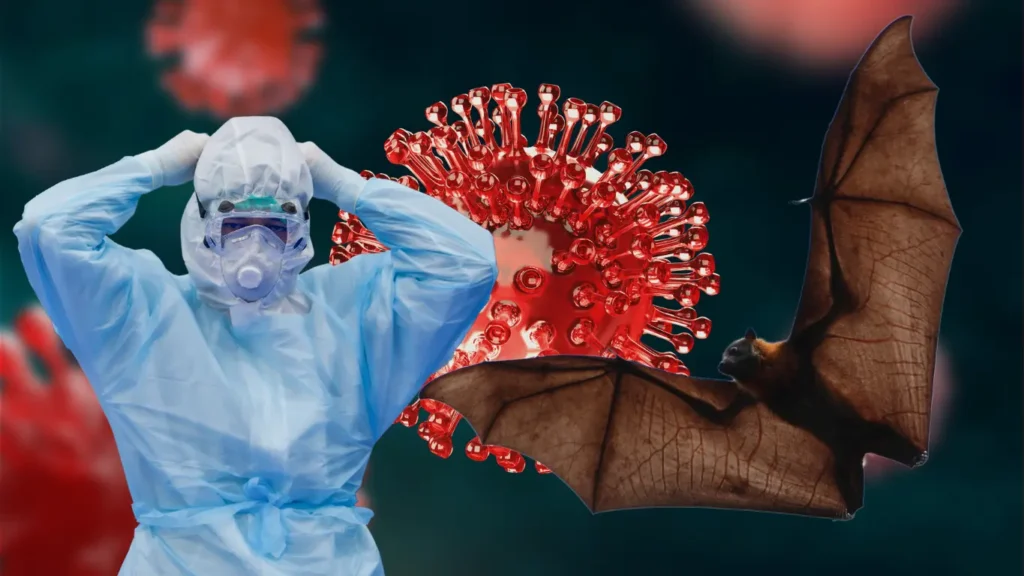
The world is still dealing with the aftermath of the COVID-19 pandemic, and now scientists have identified a new bat coronavirus—HKU5-CoV-2. This discovery raises questions about its potential risks and whether it could pose a similar threat as SARS-CoV-2. Should we be concerned? Let’s break it down.
What Is HKU5-CoV-2 Virus?
HKU5-CoV-2 is a newly discovered bat coronavirus identified by virologists in China. It belongs to the Merbecovirus subgenus, the same family as the Middle East Respiratory Syndrome (MERS) virus. Although it shares similarities with SARS-CoV-2 (the virus behind COVID-19), there are key differences in its ability to infect humans.
Key Characteristics of HKU5-CoV-2:
Origin: Found in bats, likely a zoonotic virus (one that can jump from animals to humans).
Receptor Binding: Uses the ACE2 receptor (like SARS-CoV-2) to enter cells but with lower efficiency.
Infectious Potential: Capable of infecting human cell cultures in lab tests.
Risk Factor: Under investigation; no confirmed human cases yet.
How Does HKU5-CoV-2 Compare to SARS-CoV-2?
Understanding how HKU5-CoV-2 compares to SARS-CoV-2 is crucial in assessing its threat level.
| Feature | HKU5-CoV-2 | SARS-CoV-2 |
|---|---|---|
| Host | Bats | Bats (via intermediate hosts) |
| Uses ACE2 Receptor? | Yes, but weakly | Yes, efficiently |
| Human Transmission? | No confirmed cases yet | High transmissibility |
| Disease Severity | Unknown | Mild to severe COVID-19 |
| Pandemic Potential | Unclear, under research | Proven, caused global pandemic |
Should We Be Worried?
HKU5-CoV-2 is not as efficient in binding to human cells as SARS-CoV-2, making it less likely to spread easily among humans. However, past experiences with coronaviruses (SARS, MERS, COVID-19) show that vigilance is crucial.
Can HKU5-CoV-2 Trigger Another Pandemic?
While scientists emphasize that HKU5-CoV-2 virus is not an immediate threat, they caution against ignoring emerging coronaviruses. Several factors determine whether a new virus can cause a pandemic:
1. Human-to-Human Transmission
Currently, there is no evidence that HKU5-CoV-2 virus spreads between people.
SARS-CoV-2 adapted to human transmission through mutations; HKU5-CoV-2 would need similar changes to become a concern.
2. Mutation Potential
Viruses evolve; if HKU5-CoV-2 mutates to bind human ACE2 receptors more effectively, risks may increase.
Monitoring for genetic changes is critical.
3. Zoonotic Spillover Risk
Zoonotic viruses (those jumping from animals to humans) remain a major global health concern.
The WHO and other health organizations monitor such viruses to prevent outbreaks (CDC Source).
Why Vigilance Is Necessary Without Causing Panic
HKU5-CoV-2 is a reminder that coronaviruses continue to emerge from animal reservoirs. While it is not an immediate public health threat, scientific research and surveillance are essential.
Steps Scientists Are Taking:
Ongoing Research: Virologists are studying HKU5-CoV-2 to assess its risks.
Global Monitoring: Organizations like the WHO and CDC track emerging viruses to prevent future pandemics.
Vaccine Development: Current COVID-19 vaccines may provide some protection, but further studies are needed.
What Can We Learn from COVID-19?
The COVID-19 pandemic highlighted the importance of preparedness, early detection, and transparency in dealing with new viruses. Lessons from COVID-19 should guide responses to HKU5-CoV-2 and other emerging pathogens.
Key Takeaways:
✅ Invest in virus research to understand potential threats early. ✅ Strengthen surveillance of bat populations and zoonotic diseases. ✅ Promote rapid response mechanisms to contain outbreaks before they spread.
Conclusion: Should You Be Worried About HKU5-CoV-2?
As of now, HKU5-CoV-2 is not a direct threat to humans. However, the discovery of another bat coronavirus reinforces the need for scientific vigilance. While there is no cause for panic, continued research and monitoring will help ensure global health security.
To stay updated on virus surveillance and pandemic preparedness, follow credible sources like the World Health Organization (WHO) and the Centers for Disease Control and Prevention (CDC).


Pingback: Top Merchant Navy Colleges in India 2025